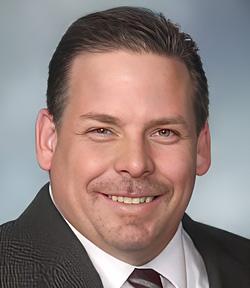-
 Regional Sales Manager, Catalis Tax & CAMA
Regional Sales Manager, Catalis Tax & CAMAExperienced sales leader focused on helping government agencies improve efficiency with innovative tax, CAMA, and escrow solutions.
View all posts
Automation Helps Tax Offices Work Smarter, Not Harder
In a post-pandemic era of severe staffing shortages, state and local tax offices face growing pressure to maintain service levels as workloads rise. Between March 2020 and March 2022, local government employment dropped by more than 300,000, yet population and property tax responsibilities continue to climb. With fewer qualified and adequately compensated staff, agencies often must choose between fighting errors and providing high-value taxpayer service.
To stay ahead, offices need to shift from reactive reconciliation to proactive collaboration. Automated escrow payment reconciliation can replace labor-intensive processes with real-time file exchange, validation, and posting, freeing staff to focus on strategic, citizen-facing work. Nearly 66% of local agencies report that staff counts have remained unchanged over the past two to three years, even as demand grows, making automation essential.
By streamlining property tax escrow management, tax offices can partner with escrow payers, mortgage servicers, banks, credit unions, and title companies as allies instead of error cleanup crews. When payments reconcile instantly and accurately, both sides gain clarity, confidence, and peace of mind.
Why Escrow Automation Matters Now
The urgency to modernize escrow processes is driven by three powerful trends. Persistent workforce gaps are leaving agencies stretched thin; over half of municipalities expect a wave of retirements, yet only a third have effective succession plans in place. At the same time, manual workflows are proving unsustainable; AI-powered tools and bulk escrow payment processing software can dramatically cut overpayments, duplicate entries, and refund churn. Finally, operational resilience is now critical as public expectations for speed, transparency, and accuracy continue to rise even when staff levels remain flat.
These forces make transformation urgent. Efficiency, precision, and improved taxpayer relationships are within reach, not by reacting to mistakes, but by preventing them from the start. A robust escrow payment solution for tax collectors is no longer optional; it’s a strategic investment in sustainability, transparency, and service excellence.
Challenges Tax Offices Face Today
Despite a clear need, many tax offices remain tied to outdated, reactive workflows:
- Fragmented file formats: Escrow firms send spreadsheets, CSVs, and PDFs that staff must manually standardize.
- Duplicate payments & refund fallout: Without real-time checks, duplicate parcels get paid, creating refund cycles and customer frustration.
- Manual ledger balancing: Staff collate ledgers and payment files by hand, delaying reconciliation for weeks.
- Lack of transparency: Agencies can’t proactively alert payers or flag issues before they become refund headaches.
- Overburdened teams: Small staffs spend most of their time on manual correction instead of taxpayer support or compliance education.
Broad Impacts of Automation
Modern automation changes the way tax offices operate at every level. When reconciliation moves from manual to digital, staff reclaim hours once spent chasing missing or misapplied payments. That time can instead go toward citizen outreach, dispute resolution, and compliance education.
AI-driven matching technology reduces over- and under-payments, improving accuracy and cash flow predictability. Compliance becomes easier to manage with digital audit trails and secure online escrow payment portals, supporting year-end reporting and regulatory requirements. At the same time, centralized escrow data management improves interdepartmental communication, reduces bottlenecks, and increases accountability.
These improvements build resilience into tax operations, helping agencies handle high volumes efficiently even when staffing remains flat.
Key Benefits of Modern Escrow Payment Software
A municipal escrow payment platform streamlines workflows, reduces errors, and frees staff for higher-value tasks:
- Instant Accuracy: Real-time reconciliation across multiple escrow accounts ensures immediate posting and faster discrepancy resolution, improving both internal operations and taxpayer experience.
- Error Prevention: Automated duplicate payment detection flags issues the moment they occur, significantly reducing refund requests and administrative workload during busy tax cycles.
- Format Flexibility: Systems that ingest spreadsheets, PDFs, and CSVs remove the need for manual conversions, ensuring fast, standardized processing from receipt to posting.
- Dashboard Visibility: Cloud-based dashboards offer real-time payment status, empowering administrators to track account activity and performance metrics without outdated reports or offline systems.
- Operational Efficiency: Reduced manual refund cycles and administrative overhead save hours each week, enabling staff to focus on outreach, compliance, and citizen service.
From Error Correction to Trusted Partnership
In an environment where tax offices must “do more with less,” shifting from reactive error correction to predictive property tax escrow management is essential. Automated file exchange, real-time ledger balancing, and cloud-based payer portals replace outdated spreadsheets, while proactive status updates strengthen relationships with mortgage servicers, banks, and title companies.
The most efficient agencies will no longer be those who fix mistakes, but those who prevent them. Catalis’ Escrow Payment Management platform is built for this future. With real-time reconciliation, cross-format file integration, duplicate payment prevention, and audit-ready transparency, Catalis empowers stretched teams to stay ahead.
Catalis Escrow Payment Management is easy to implement, ensuring a seamless transition from legacy systems to efficient, modern processes.
Visit Catalis for a comprehensive look at our solutions for government and the public sector.


